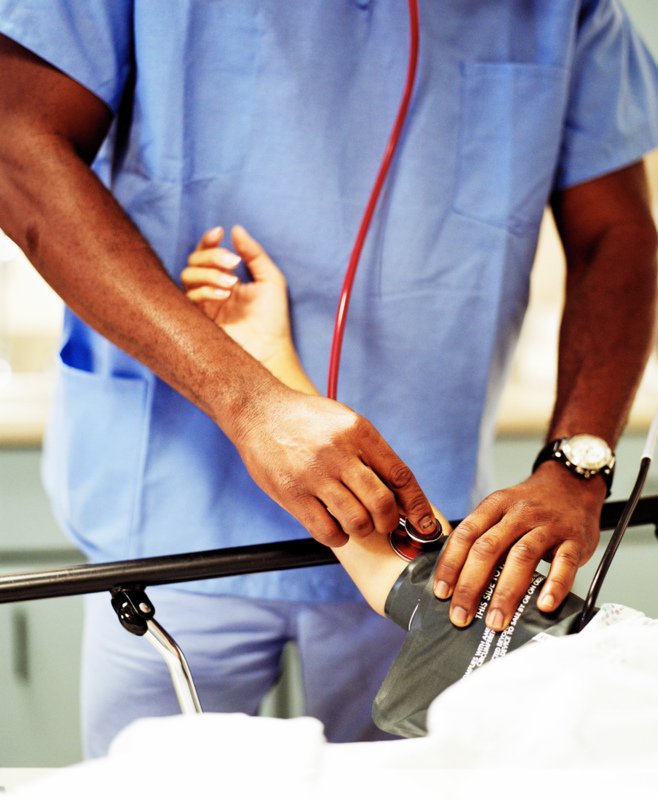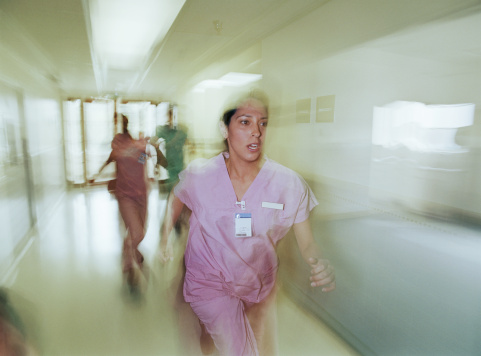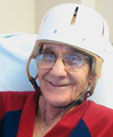Rapid Response Team Intervenes Before Situations Warrant ‘Code Level’ Care
 Over time, most caregivers develop a sort of sixth sense—a trained ability to notice subtle clues and anticipate when a patient might heading for a dangerous turn.
Over time, most caregivers develop a sort of sixth sense—a trained ability to notice subtle clues and anticipate when a patient might heading for a dangerous turn.
And it’s Mark Ott’s job, as he heads up Strong Memorial’s Adult Rapid Response Team, to hone that instinct. A senior nurse manager who manages quality and safety projects for Adult Critical Care Nursing, he’s busy teaching caregivers how to read subtle signs—and how to trust their guts.
“Usually, about six to eight hours before a patient’s condition deteriorates—before they get to the brink of a serious setback event like sepsis, cardiac arrest, or respiratory arrest—you can detect important warning signs,” Ott said. “The good news is that, caught soon enough, there are simple solutions that can help put the patient on steadier ground.”
The Adult Rapid Response Team is eager to do just that: Help unit care teams spot the first hint of trouble. Within minutes of being paged, the team—consisting of a nurse, respiratory therapist, and critical care provider—is at the bedside, ready to come alongside a patient and their on-unit care team and add another layer of support.
“We’re the folks you call when the storm is brewing—not in the throes of an actual emergency,” Ott emphasized. “We’re trying to course-correct, and what we do feels an awful lot like rounding. It’s a huge opportunity for on-the-spot education.”
 Who You Gonna Call?
Who You Gonna Call?
Since 2005, Ott has led the team together with Mike Apostolakos, M.D., and Mary Wicks, R.N., M.P.A. (respectively, they direct Adult Critical Care and Adult Critical Care Nursing). A similar but separate team, under the guidance of Elise van der Jagt, M.D., M.P.H., and Sue Bezek, R.N., PNP-BC, focuses just on kids.
The program hinges on ongoing education, and training unit nursing teams when to pick up the phone. To that end, Ott says the team has been persistent. Reminder posters on units spell out precise things to watch for: Oxygen saturation dipping below 90 percent; a patient not being easily woken; noisy breathing, to name a few.
But there’s also room for the can’t-put-your-finger-on it concerns, too. One nurse recently sensed something was wrong after her patient finished their morning bath. She paged the team, explaining that her patient seemed somewhat confused, and was fighting harder to breathe. As it turned out, the nurse’s hunch was right—the patient was headed toward septic shock. Thankfully, the decision to involve Rapid Response helped write a happier ending: New antibiotics were ordered and hung, and the patient was healthy enough for discharge within the week.
Adding ‘Family-activated’ Feature
On two units—6-1200 (medicine) and the 6-3600 (surgery)—Ott is currently piloting a slightly different twist with the team: Inviting families to summon the team directly.
“Pediatrics’ rapid response force has had this patient-activated aspect in place for some time, and it’s really gaining popularity nationally,” Ott said.
Going forward, the team also has set its sights on improving their ability to spot early stages of sepsis (a serious medical condition, characterized by whole-body inflammation, plus a known or suspected infection). Sepsis proves fatal 30 percent of the time, but by recognizing the hallmark signs and acting early, caregivers can dramatically improve a patient’s chance of survival. Studies show that patients who receive antibiotics within one hour of a sepsis diagnosis have a 79.9 percent survival rate—but these odds plummet by about 8 percent every hour for the next six hours treatment is delayed.
Clearly, hours count. Minutes count. Intuition counts.
“This just underscores the importance of our cooperating closely with units, of teaching them to identify early warning signs,” Ott said. “It’s really rewarding work.”
Rebecca Jones | 8/1/2013



